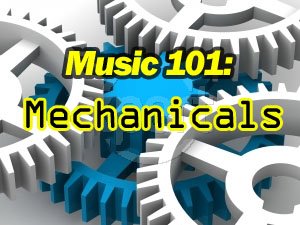In the last segment, Music 101: Publishing, we gave you some detailed insight on publishing rights and how royalty payments are made. This continuation of the Music 101 series will go further into ways in which published artists can get paid. One way is through the retail sales of your recordings or as worded in a recording contract, through mechanical royalties.
Mechanical royalties are derived from income made from the sales of your recording. That money flows to the music company (label), who then turn around and pay a portion of that money to the artists (based on their contract agreement with the label). Finally, the actual owner of the recording pays the publisher a portion of the sale, or a mechanical royalty, for the right to record, copy, and distribute copies of the recording. Sounds confusing, huh??? But it’s not really! All you have to remember is that, you as the artist will be giving up a certain percentage of your royalty earnings to the label so that the label can license your music to other media sources for reproduction purposes. Licensing your recording to television commercials, internet sites, etc will continuously bring in money to you and the label. The key here is to make sure that your attorney knows what he or she is doing, so that they can work out the best deal for you and negotiate a decent percentage for your mechanicals.
In part 3 of the Music 101 series, we will discuss another payment method, Performance Royalties. Also, we will get into PRO’s (Performing Rights Organizations) and let you decide which one is best for you!


